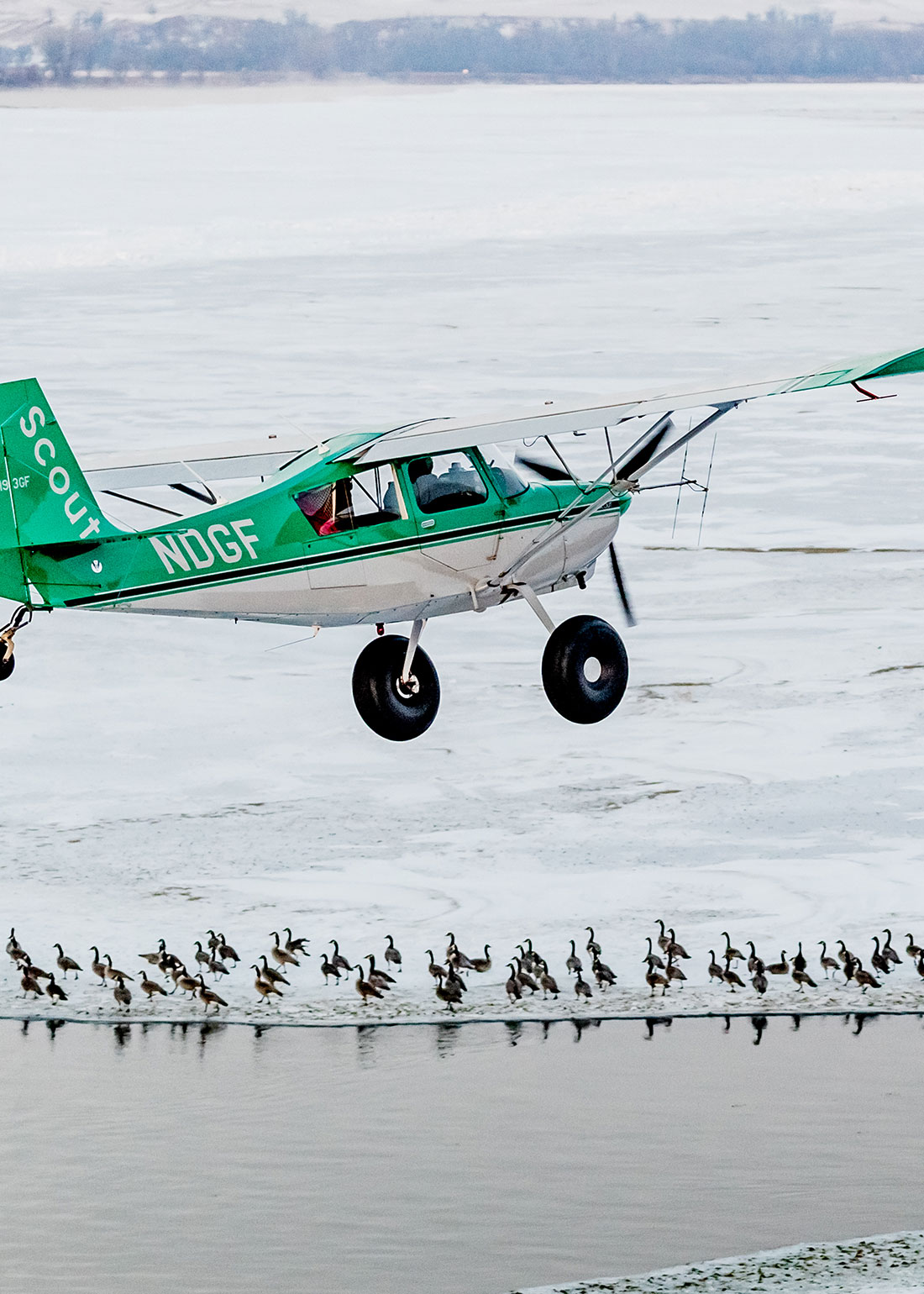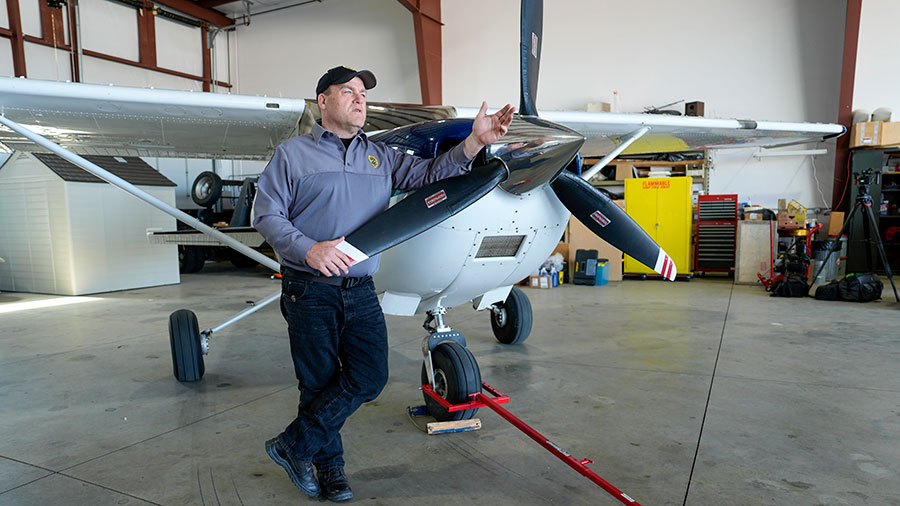A Different View
Ron Wilson

Big game in North Dakota were surveyed from the air for the first time nearly 85 years ago, and that process of getting an aerial count on mule deer, white-tailed deer, pronghorn and other large mammals remains a vital management tool decades later.
The North Dakota Game and Fish Department’s aerial approach doesn’t end with helping to manage the state’s natural resources either but extends to safeguarding the recreating public and enforcing game and fish laws.
“With a small number of game wardens in North Dakota, having a warden pilot available, having eyes in the sky, is a huge benefit in protecting our resources in the state,” said Scott Winkelman, enforcement division chief, in reference to Mike Linden, Department game warden pilot. “The plane and the pilot are also extremely beneficial in search and rescue operations and in other law enforcement matters.”
While Linden, who worked in law enforcement in Colorado for 31 years and has been flying longer than that, must spend some of his time on the ground enforcing game and fish laws, he leans hardest to his time in the air if given a choice.
“During hunting season, for example, I fly a lot to assist wardens on the ground by identifying the location of hunters across the landscape,” Linden said. “It’s helpful to them because from the air I can see so much more, a lot wider area than somebody on the ground might see from any single vantage point.
“One of the things that I’ll see because of my vantage point is off-trail use, ATVs traveling off-trail during the deer season,” he added. “Another thing that I see at night is folks shining or spotlighting, which is something a game warden on the ground wouldn’t see unless they were in the right place at the right time.”

Jeff Faught has been flying for the Department’s wildlife division for nearly a quarter century. From whitetail deer surveys in winter to the pronghorn survey in western North Dakota in summer, Faught is the one behind the controls, with a biologist buckled in behind him.
“Our aerial wildlife surveys are essential to the Game and Fish Department’s survey program,” said Bill Haase, Department assistant wildlife division chief. “Oftentimes, it’s the only effective way to survey these species.”
“During the spring and fall mule deer surveys, for instance, we have survey study areas… most of them have been done since the 1950s and we fly the same patterns every year,” Faught said. “The biologist gets in with me early in the morning while the deer are out, and we fly every square inch of these areas, mostly around in circles, up and down the drainages, and we count what we see. In the spring, we count total numbers. In the fall, we count bucks, does and fawns.”
Faught is also essential in helping researchers track collared animals — from wild turkeys in the river drainages in central North Dakota to elk in the badlands — to learn, among other things, the comings, goings and habitat use of the marked critters.
“The antennas on the plane are for tracking those animals with transmitters,” Faught said. “There’s a left antenna and a right antenna, so when I dial in that frequency, I can listen and when I hear it, then I can switch to separate left from right and locate exactly where that animal is at.”
Faught calls the aircraft his office. It’s where he’s most comfortable.


